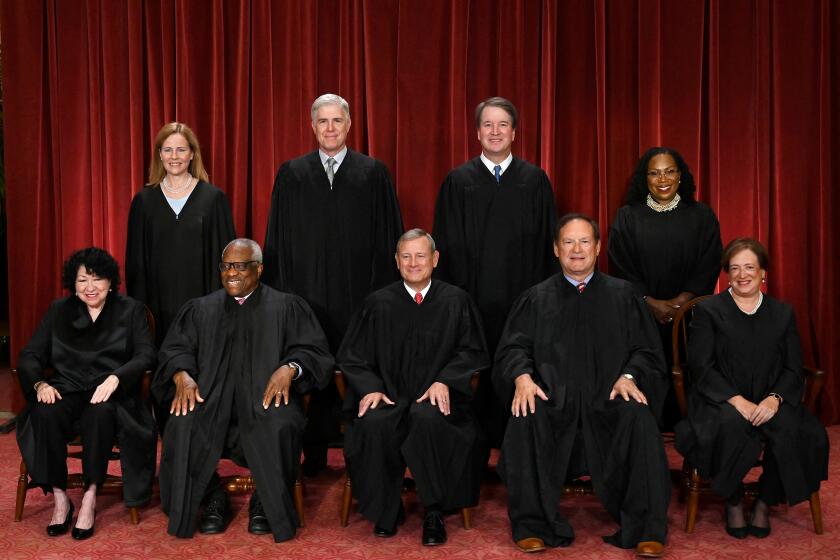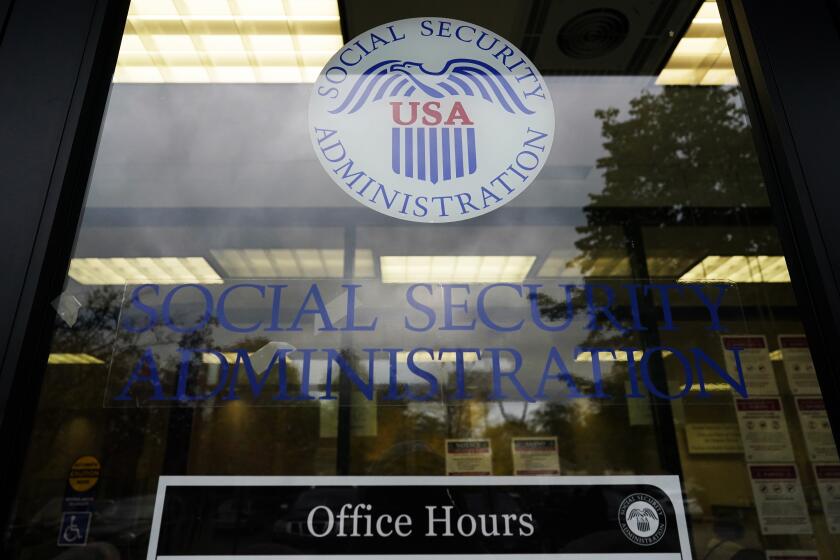Trump’s latest round of tariffs have taken effect — and more retaliation is coming. What we know

- Share via
NEW YORK — President Trump has launched tariff wars with nearly all of America’s trading partners. And there’s no end in sight.
A number of sweeping new taxes on goods from other countries are already here — and more took effect on Wednesday. Trump implemented higher rates for his latest and most severe volley of duties, which he calls “reciprocal” tariffs. Further escalation is set to soon follow. China has vowed to roll out a heightened set of counter tariffs on U.S. goods starting Thursday and, separately, E.U. member states voted to approve their own retaliatory levies in response to previously imposed steel and aluminum taxes.
With so many back-and-forth tariff actions and threats, it can be tough to keep track of where things stand. Here’s a rundown of what you need to know.
What tariffs took effect on Wednesday?
Higher rates for Trump’s latest — and most sweeping — round of tariffs took effect on Wednesday.
Trump announced these new import taxes on April 2, which he dubbed “Liberation Day,” as part of his “reciprocal” trade plan. In a fiery speech claiming that other countries had “ripped off” the U.S. for years, Trump declared that the U.S. would now tax nearly all of America’s trading partners at a minimum of 10% — and impose steeper rates for countries that he says run trade surpluses with the U.S.
The 10% baseline already went into effect Saturday. And when the clock struck at midnight Wednesday, the higher import tax rates on dozens of countries and territories took hold.
The steeper levies run as high as 50% — with that biggest rate landing on small economies that trade little with the U.S., including the African kingdom of Lesotho. Some other rates include a tax of 47% on imports from Madagascar, 46% on Vietnam, 32% on Taiwan, 25% on South Korea, 24% on Japan and 20% on the European Union.
Economists warn that the levies will raise prices for goods consumers buy each day — particularly as these new tariffs build on some previous trade measures.
Trump last week announced a tariff of 34% on China, for example, to come on top of 20% levies he imposed on the country earlier this year. He then added on another 50% in response to Beijing’s recently promised retaliation — bringing the combined total to 104% tariffs on Chinese goods starting Wednesday.
Are more tariffs coming?
Yes. Starting Thursday, China says it will now tax American goods at 84%.
China announced a flurry of countermeasures in response to the “Liberation Day” tariffs last week, including plans for its own 34% levy on U.S. goods to match what was then Trump’s new rate. But after Trump threatened — and then followed through — on adding an additional 50%, China said Wednesday that it would raise its tariffs to 84%.
“If the U.S. insists on further escalating its economic and trade restrictions, China has the firm will and abundant means to take necessary countermeasures and fight to the end,” the Ministry of Commerce wrote in a statement introducing its white paper on trade with the U.S.
The trade war between the U.S. and China isn’t new. The two countries had exchanged a series of tit-for-tat levies in recent months — on top of tariffs imposed during Trump’s first term, many of which were preserved or added to under former President Biden.
While China has taken the toughest approach so far, a number of countries are evaluating their own responses to Trump’s levies — and some have already promised, if not already taken, more retaliation.
EU members voted Wednesday to approve retaliatory tariffs on $23 billion in goods in response to Trump’s previous 25% tariffs on imported steel and aluminum, for example. The EU’s counter tariffs will come in stages, with some arriving April 15 and others on May 15 and Dec. 1. The executive commission didn’t immediately specify which goods would be affected.
Members of the 27-country bloc repeated their preference for a negotiated deal to settle trade issues — calling the U.S. tariffs “unjustified and damaging.” Ursula von der Leyen, head of the EU’s executive commission, has offered a zero-for-zero tariffs deal on industrial goods, but Trump has said that’s not enough to satisfy U.S. concerns.
Trump could also roll out more product-specific tariffs down the road. The president has previously threatened import taxes on goods like copper, lumber and pharmaceutical drugs — all of which are currently exempt from Trump’s “reciprocal” levies.
During a speech Tuesday night, Trump boasted he was offering “breaking news” before vowing, “We’re going to be announcing, very shortly, a major tariff on pharmaceuticals.” In the same remarks, the president lamented that the U.S. no longer produces many of the pharmaceuticals its citizens take, and said new tariffs would change that — bringing production of medication back to the U.S.
What other import taxes are already here?
A handful of tariffs are already in effect, including Trump’s 10% baseline tax that took effect on Saturday.
Prior to that sweeping levy, Trump had rolled out several other rounds of tariffs targeting particular countries and products. His 25% tariffs on auto imports began last Thursday, with taxes on fully imported cars. Those levies are set to expand to applicable auto parts in coming weeks, through May 3.
Canada responded with a 25% levy on auto imports from the U.S. that do not comply with the 2020 U.S.-Mexico Canada Agreement. Those also took effect on Wednesday.
Trump’s expanded steel and aluminum tariffs came into effect in March. Both metals are now taxed at 25% across the board, with Trump’s order to remove steel exemptions and raise aluminum’s levy from his previously imposed 2018 import taxes taking effect March 12.
Beyond previous levies on China, Trump also targeted Mexico and Canada earlier this year. They were spared from last week’s heightened rates; Trump imposed — and later partially suspended — 25% duties on goods from both countries.
Meanwhile, goods complying with the USMCA can continue to enter the U.S. duty-free, according to the White House. Other imports are still levied at 25%, as well as a lower 10% duty on potash and Canadian energy products.
Once the two countries have satisfied Trump’s demands on immigration and drug trafficking, the White House said the tariff on non-USMCA compliant imports will drop from 25% to 12%.
Grantham-Philips writes for the Associated Press. AP Writers Huizhong Wu in Bangkok and Lorne Cook in Brussels contributed to this report.
More to Read
Sign up for Essential California
The most important California stories and recommendations in your inbox every morning.
You may occasionally receive promotional content from the Los Angeles Times.










